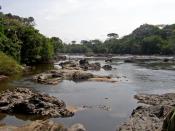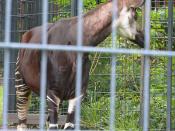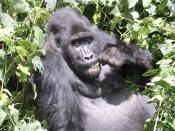The Okapi Wildlife Reserve was given its official protected status in 1992 and covers 8,500 square miles of the Ituri rainforestÃÂs 175,000 square kilometers in the troubled Democratic Republic of Congo (DRC). The irony is that despite a troubled history marred with civil and tribal unrest, the region is considered one of the most biologically diverse areas in the African continent. The Ituri consists of lowland tropical forests as well as canopied rainforests that harbor an array of flora and fauna found nowhere else (Jenike, 1995).
The Reserve itself has in its protection such familiar rainforest species as chimpanzees, elephants, hornbills and about several species of monkeys. But its most prominent if not elusive resident is the okapi or the Okapia johnstoni; the only living relative of the giraffe and sometimes called the forest giraffe. Physically, the okapi is a strange if not fascinating creature. With stripes similar to a zebraÃÂs with unusual coloring and markings, it is a shy and gentle animal which uses its camouflage-like coat to elude capture by predators.
It is so elusive and naturally quiet that even the native tribes of the Congo rarely encounter or see one (GIC, 2002).
Because of this rarity and gentleness amid a landscape encroached upon and endangered by various elements, oftentimes violent, the okapi has become the national symbol of conservation efforts in the Congo region. Under the flagship initiative of Gilman International, their Okapi Conservation Project aims to make people around the world aware that saving the okapi and its habitat does not only mean saving one creature; protecting and preserving the habitat also means securing the survival and preservation of millions of other rainforest species of plants and animals (ACF, 2002).
The conservation projectÃÂs success therefore relies on keeping the forest ecosystem intact and protected.
Human intrusions...


